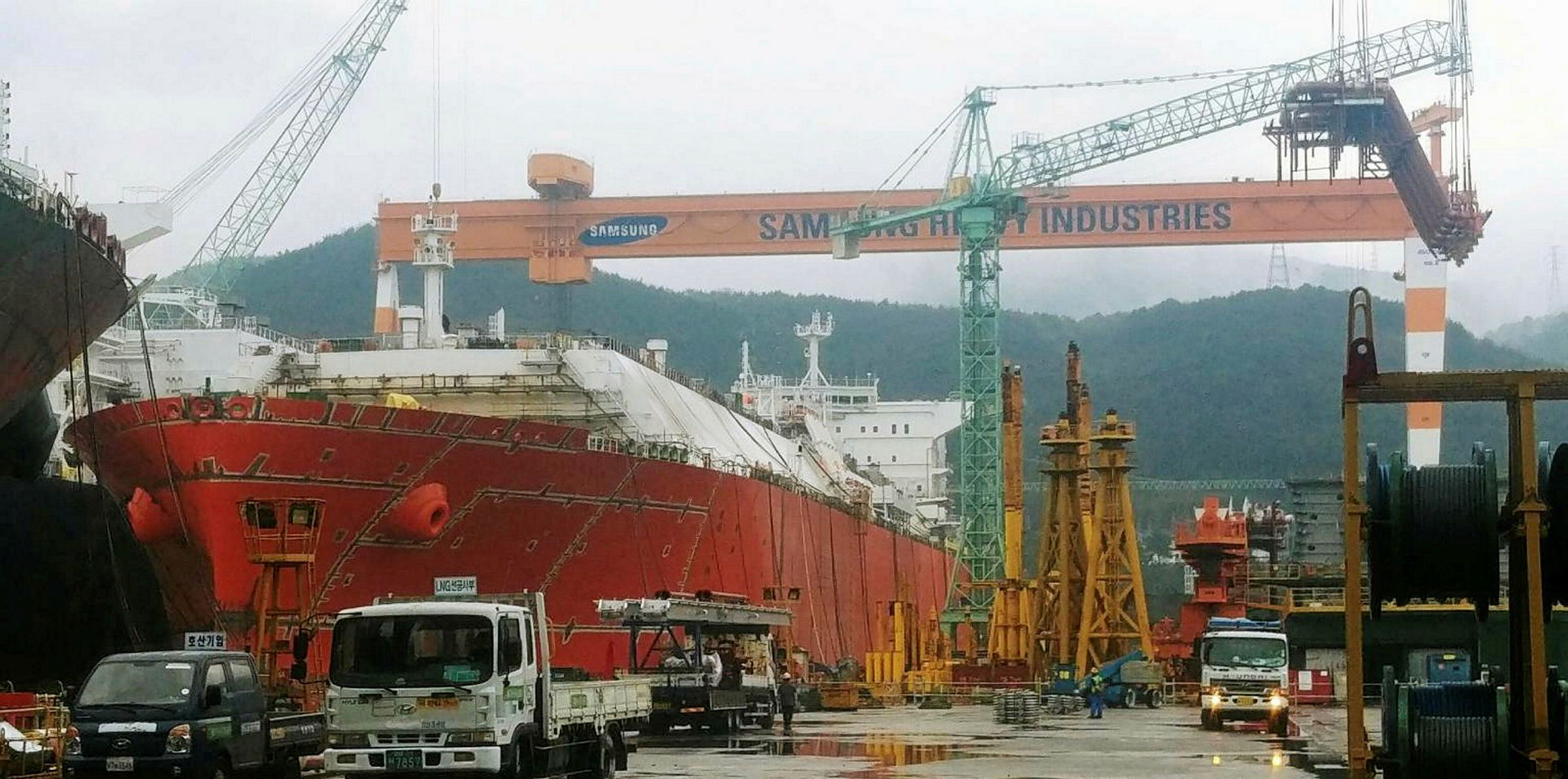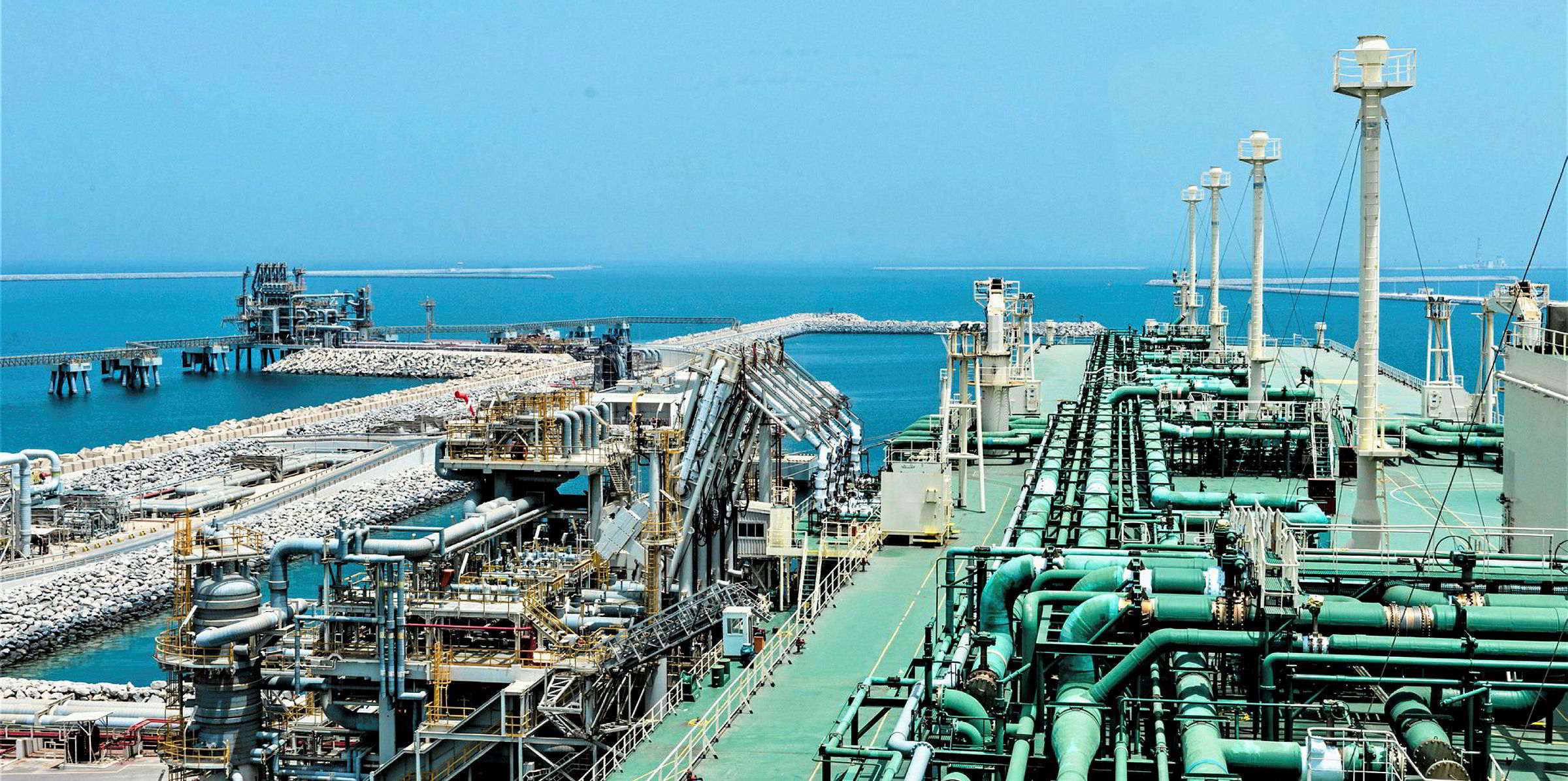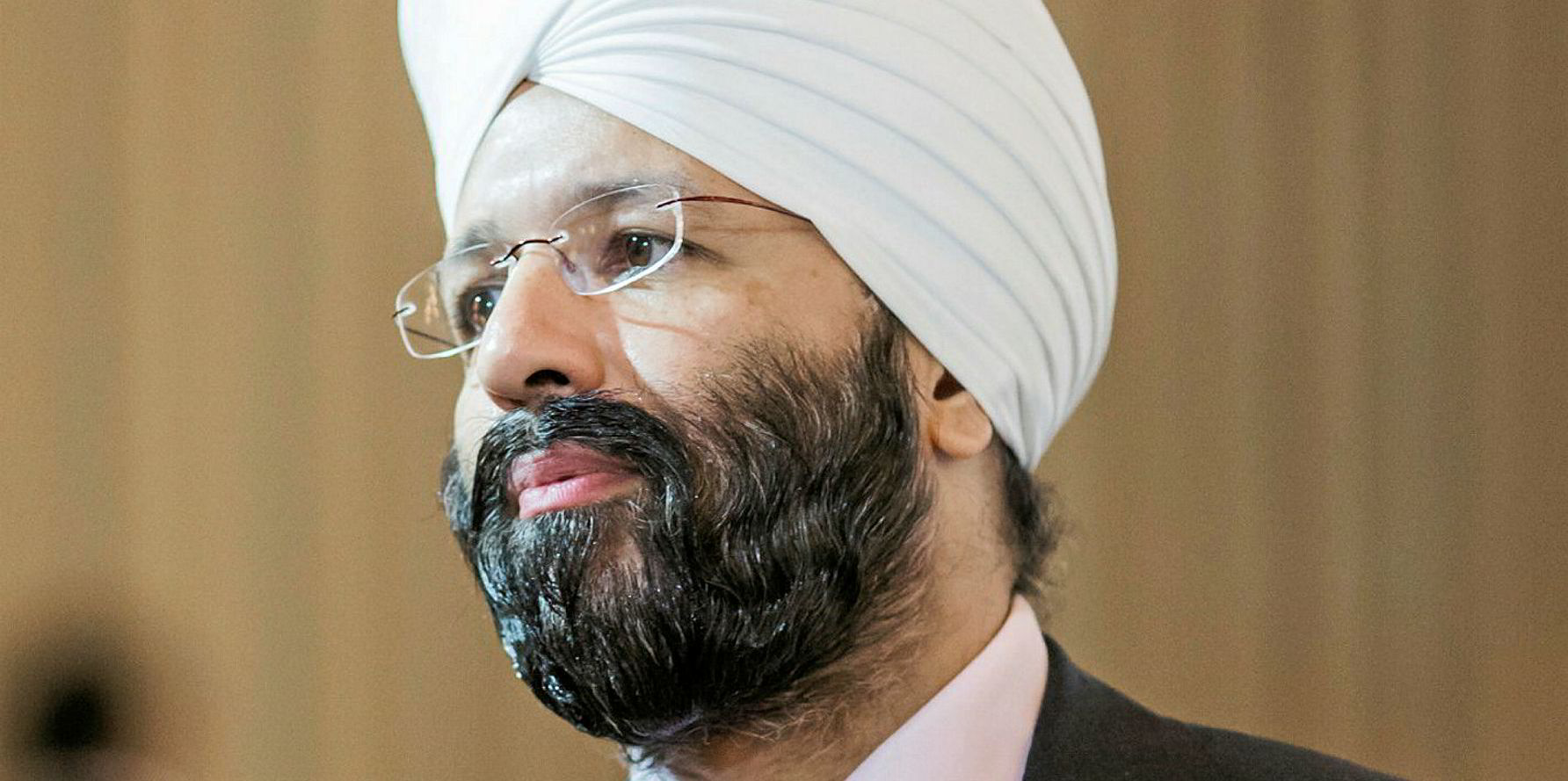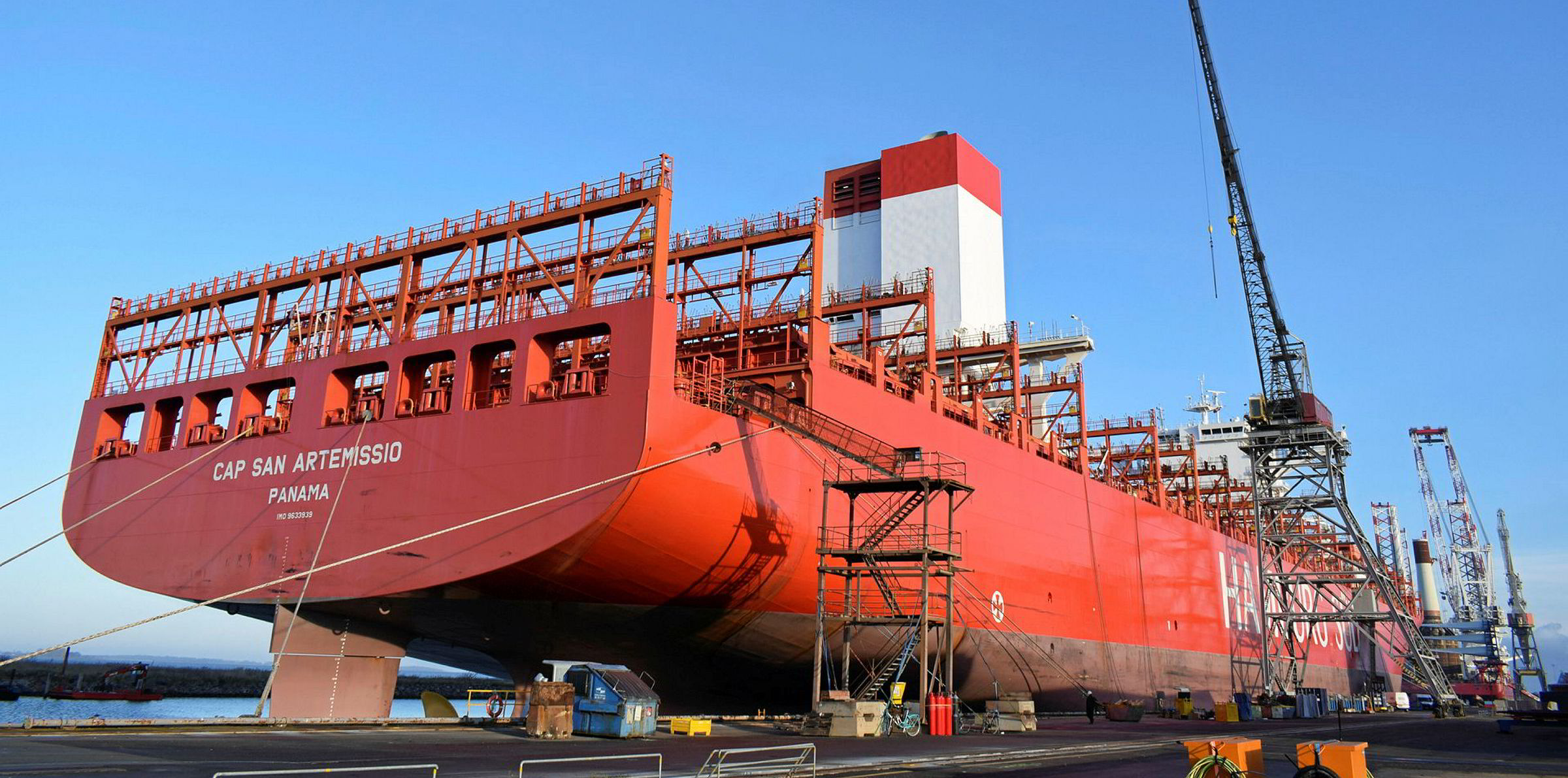Ports could be “front-runners” of Europe’s energy transition, according to a first in-depth study of the sector’s clean-energy transition by classification society DNV GL.
This will come as ports reinvent themselves to service a future ‘blue economy’ of industries including offshore wind and hydrogen-powered shipping.
DNV GL also sees ports becoming export hubs channelling electricity through an EU-wide offshore power grid.
The report, published by the consultancy with European utility federation Eurelectric, found that forecast industrial production increases by 2050 of almost 60% and cargo throughput some 30% higher “could be more than compensated for” by energy efficiency measures and electrification with renewables,.
Those measures would also cut carbon intensity for port-side energy use “almost in half”.
Transport in Europe is currently responsible for for one-third of Europe’s total CO2 emissions, with maritime shipping accounting for 14% alone.
“Ports have always played a vital role in our economy in Europe for hundreds and hundreds of years, they are important to our very economic fabric,” said Ditlev Engel, DNV GL's chief executive for its energy division, told sister publication Recharge.
“Despite this, when you talk to ports about the energy transition, the discussion is still early-stage. Reinvented, ports can play a pivotal role in the world’s decarbonisation challenge and provide a blueprint for industries and governments to cut pollution and transition to a cleaner energy future.”
The report calculates that by 2050, total electricity generating capacity for industrial ports could increase more than tenfold, with the opportunity for renewable energy to meet at least 70% of total on-site electricity generation by mid-century, compared to just 5% today.
“If you look at where ports are today they do not have high ‘greening’ of operations and if they don’t do anything they are working against those who are forward-thinking about the climate and decarbonising their activities. Plus there is the issue of pollution in ports,” said Engel.
Incentives needed
“Governments need to incentivise port authorities and energy players to facilitate the development of energy infrastructure across multiple energy carriers in ports.”
Beyond the economic gains of renewables-powered electrification of port facilities is the bigger prize that comes with their location “at the intersection of land and sea where many industry sectors are coming together”, he noted.
He said ports are in an “advantageous position with the coming mass deployment of offshore wind plant and the need for associated grid reinforcements and energy storage” where the offshore network meets the national grid.
“Ports have the potential to also become hubs for renewable energy generation,” stated DNV GL senior consultant Rob van Gerwen, lead author of the report.
“The volumes of offshore wind power plant we are going to build off Europe? That much power coming into the grid needs places to be ‘absorbed’. We know that there will be pinch-points.”
He said ports can use traditional battery storage, and green storage when feasible, to play this role.
The report suggests many of the soon-to-be-decommissioned coal storage sheds and oil & gas terminals in Europe’s major ports could be converted to house substation equipment and energy storage systems.
“In the future you might still see some gas-fired plants in ports, for balancing, but they would be equipped with CCS [carbon capture and storage], and then vast volumes of renenewables, much of its offshore wind,” said Gerwen.
“The ports will become something like a utility asset – or play that role,” he added.
He highlighted the report’s recommendation that there be a “closer working relationship” between utilities and ports to plan for the electrical grid infrastructure to be developed in harbour areas during the next decade.
Warning
The report also sends a warning shot that not transitioning “rapidly enough” will result in ports’ energy use and CO2 emissions increasing significantly, with expectations that electricity use will leap five-fold by 2050 to be “almost on par with fuel oil consumption in absolute terms”.
“Ensuring that ports become the driver of the energy transition and not a bigger contributor to global emission levels, will secure their position as linchpins in the economy and major employers in the markets they serve,” said Engel.
This story was originally published in Recharge, TradeWinds' sister publication covering the renewable energy sector.








